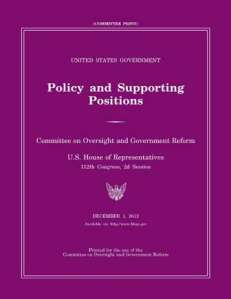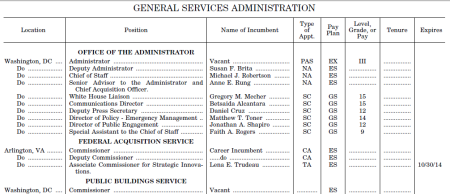[UPDATED FOR December 17, 2012: We're bringing back our readers' all-time favorite post, updated for 2012, along with info on the new eBook version of NORAD's story...]
One of America’s key weapons in defense of its homeland is NORAD, the North American Aerospace Defense Command. With its slogan of “Deter, Detect, Defend” its stated mission is as follows:
The North American Aerospace Defense Command conducts aerospace warning, aerospace control and maritime warning in the defense of North America.
Image: Old NORAD Tracks Santa poster. Source: NORAD
What does “aerospace warning” consist of? It includes “the monitoring of man-made objects in space, and the detection, validation, and warning of attack against North America whether by aircraft, missiles, or space vehicles, through mutual support arrangements with other commands.”
One of the most unusual but beloved “objects in space” NORAD has had the responsibility for monitoring is none other than Santa Claus.
How did tracking Santa Claus become part of NORAD’s mission? It all began with a typo.
Tinsel typo
 ‘Twas the night before Christmas, December 24, 1955, when a Sears Roebuck & Co. department store placed an advertisement in a Colorado Springs newspaper telling children that they could telephone Santa Claus directly.
‘Twas the night before Christmas, December 24, 1955, when a Sears Roebuck & Co. department store placed an advertisement in a Colorado Springs newspaper telling children that they could telephone Santa Claus directly.
It featured a big picture of St. Nick, a phone number and these instructions, “Hey, Kiddies! Call me direct…Call me on my private phone and I will talk to you personally any time day or night.” Ironically, the ad also cautioned, “Kiddies, be sure and dial the correct number!”
Image: 1955 Sears ad with NORAD number. Source: NORAD
Unfortunately, the paper misprinted the phone number, listing instead the top secret hotline that was used only in national emergencies to alert CONAD (the Continental Air Defense Command–NORAD’s predecessor) if the Soviets were attacking!
The “Santa Colonel”
 U.S. Air Force Col. Harry Shoup, CONAD’s director of operations, grabbed the red emergency phone, thinking an attack was imminent.
U.S. Air Force Col. Harry Shoup, CONAD’s director of operations, grabbed the red emergency phone, thinking an attack was imminent.
According to Shoup’s account, he answered, thinking it was his general, “Sir, are you there?”
Image: Col. Harry Shoup, the “Santa Colonel” Source: NORAD
Instead, a little 6 year-old boy’s voice came over the phone asking, “Are you really Santa Claus?” Shoup, thinking it was a prank, barked into the phone asking “Would you repeat that?” and demanding to know who was calling. At this point, the little voice started crying, and asked tentatively, “Is this one of Santa’s elves, then?”
 Soon the phone began ringing off the hook with kids wanting to talk to Santa, so once they figured out the error, Shoup decided to play along and instructed his team to act as Santa’s helpers. He had his radar operators check the radar for indications of Santa making his way south from the North Pole.
Soon the phone began ringing off the hook with kids wanting to talk to Santa, so once they figured out the error, Shoup decided to play along and instructed his team to act as Santa’s helpers. He had his radar operators check the radar for indications of Santa making his way south from the North Pole.
Image: A 1955 red hotline phone. Source: VintageRotaryPhones.com
Children who called were given updates on the current location of St. Nick and his reindeer-drawn flying sleigh, and a beloved annual Christmas tradition was born.
Shoup became known as the “Santa Colonel,” a moniker he cherished until his death, his daughter says.
Santa Tracker goes high-tech
In 1958 Canada joined the alliance and CONAD became NORAD, which carried on the Santa mission. Originally, Santa tracking updates were delivered via radio broadcasts and of course, calling the Santa Tracking hotline, but with the introduction of the Internet, Santa tracking went online by Christmas 1997.
 Guarding What You Value Most: North American Aerospace Defense Command Celebrating 50 Years, the seminal publication documenting NORAD’s illustrious 50-year history, provides easy-to-follow timelines of key NORAD events along with copious color photographs, maps and snippets of history of this important organization.
Guarding What You Value Most: North American Aerospace Defense Command Celebrating 50 Years, the seminal publication documenting NORAD’s illustrious 50-year history, provides easy-to-follow timelines of key NORAD events along with copious color photographs, maps and snippets of history of this important organization.
The publication proudly covers the history of its favorite mission— Santa tracking— stating:
“Today, using the same technology used to perform their day-to-day mission— satellites, high-powered radars and jet fighters— NORAD tracks Santa Claus as he makes his Yuletide journey around the world.”
Specifically, NORAD’s Santa site says that it uses four different high-tech systems to track Santa–radar, satellites, Santa Cams and fighter jets:
Tracking Santa starts with the NORAD radar system called the North Warning System. This powerful radar system consists of 47 installations strung across the northern border of North America. On Christmas Eve, NORAD monitors the radar systems continuously for indications that Santa Claus has left the North Pole.
The moment that radar indicates Santa has lifted off, we use our second detection system. Satellites positioned in geo-synchronous orbit at 22,300 miles from the Earth’s surface are equipped with infrared sensors, which enable them to detect heat. Amazingly, Rudolph’s bright red nose gives off an infrared signature, which allows our satellites to detect Rudolph and Santa.
The third tracking system is the Santa Cam network. Santa Cams are ultra-cool, high-tech, high-speed digital cameras that are pre-positioned at many locations around the world to capture images and video.
The fourth system is made up of fighter jets. First, Canadian NORAD fighter pilots flying the CF-18 intercept and welcome Santa to North America. In the US, American NORAD fighter pilots in either the F-15 or the F-16 provide an escort flying alongside Santa and his famous reindeer.
Santa goes mobile… and Global!
[UPDATE DECEMBER 2012]:For Christmas 2012 Google is stepping aside to make room for other companies to help track Santa. Said a NORAD spokesperson: “This year, NTS and Google mutually agreed to go in new directions, and we are excited to welcome a number of new contributors, to include Microsoft, Windows Azure, Bing, and iLink-systems, among others, to help us in our mission of tracking Santa.“
Thanks to dozens of volunteer local translators, NORAD Tracks Santa website is now offered in 8 languages, including English, Spanish, French, German, Italian, Portuguese, Japanese, and Chinese.
Listening along with the live computer video clips, many parents use this as an opportunity to give a fun world geography lesson as the family follows Santa’s path around the world. Volunteer military personnel give running commentary and interesting tidbits about the cities as Santa passes through. For example, did you know that NORAD’s satellites and radar clocked Santa’s sleigh going 100 times faster than the Japanese bullet train?
How many “elves” does it take to track “Big Red”?
Today, children young and old all over the world can call in or email NORAD on Christmas Eve to find out just where Santa is, or, since Santa went digital, follow along on NORAD’s cutting edge web site.
NORAD has over a thousand volunteers every year (in 2008 there were 1,275) from Army, Navy, Air Force and Marine Corps personnel and their families, who record audio and come in to NORAD on Christmas Eve to staff the phones and answer emails to anxious children wanting to know if here comes Santa Claus right down their particular Santa Claus Lane… Meanwhile engineers ensure the tracking systems are on target and U.S. fighter jets stand ready to escort the “celebrity” that NORAD calls “Big Red” as he passes through U.S. air space.
How can you track Santa on Christmas Eve?
 So, on the night before Christmas, when not a creature is stirring, you might want to rouse your mouse– uh, your computer version, of course– and surf over to NoradSanta.org or call 1-877-HI-NORAD (1.877.446.6723) from North America to find out when Santa Claus is coming to YOUR town. (By the way, Santa’s helpers at NORAD are great at reminding the kids to go to bed because Santa is near and won’t stop if they’re awake!)
So, on the night before Christmas, when not a creature is stirring, you might want to rouse your mouse– uh, your computer version, of course– and surf over to NoradSanta.org or call 1-877-HI-NORAD (1.877.446.6723) from North America to find out when Santa Claus is coming to YOUR town. (By the way, Santa’s helpers at NORAD are great at reminding the kids to go to bed because Santa is near and won’t stop if they’re awake!)
Image: How the Air Force and NORAD Tracks Santa Claus video at NORAD location in Cheyenne Mountain. Source: Around the Air Force news special, December 2005.
Starting at 4am Eastern Time on December 24, you can:
 Track Santa Online: Logon to www.NoradSanta.org.
Track Santa Online: Logon to www.NoradSanta.org.- Call the Santa Hotline: From the United States or Canada, call
1-877-HI-NORAD (1-877-446-6723). - Maps: Follow Santa on Cesium and Bing Maps, starting 4am ET on December 24th.
- Mobile Apps: Download a free mobile app either from iTunes App Store or for Android devices.
While You Wait: While you’re waiting for the tracking to begin, all December (or year-round) you can play some of the many fun games on their Countdown Village page on their web site, and stop by the NORAD Tracks Santa Facebook page to show your appreciation.
How can I get a copy of “Guarding What You Value Most: North American Aerospace Defense Command Celebrating 50 Years, the wonderful hardcover book of 50 years of NORAD history chock full of color photos and anecdotes, including the Santa Tracker story?
- You can buy it at GPO’s online bookstore.
- You can find it in a library
- [UPDATED FOR Dec. 2012]: And now, you can also buy it as an eBook on Google Play or the Apple iTunes iBookstore.
About the Author: Michele Bartram is Promotions Manager for GPO’s Publication and Information Sales Division and is responsible for online and offline marketing of the US Government Online Bookstore (Bookstore.gpo.gov) and promoting Federal government content to the public. She has been a faithful NORAD Tracks Santa fan for years!








 Posted by GPOBookstore
Posted by GPOBookstore 






















